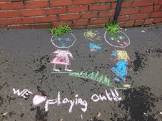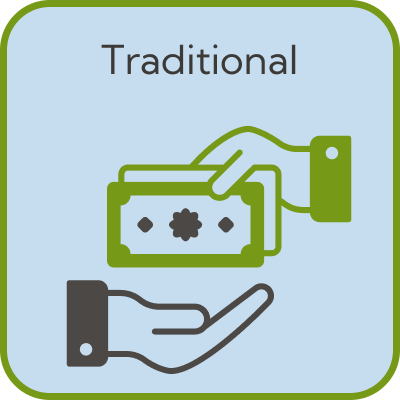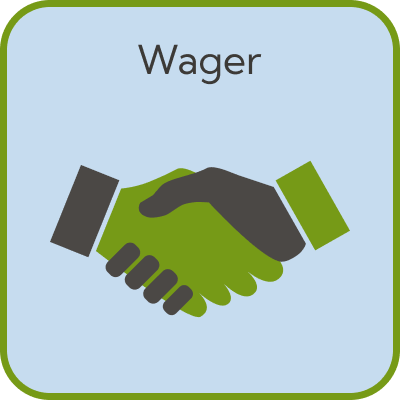Fundraise by participating in Self-organised chalk drawing pavement art challenge!
Self-organised chalk drawing pavement art challenge
Imagine transforming a simple stretch of pavement into a vibrant canvas that not only showcases your artistic talents but also raises funds for a cause close to your heart. The self-organized chalk drawing pavement art challenge enables you to do just that, offering a unique blend of creativity and charity.
In this event, you select a public area where you can legally use chalk on the pavement to create engaging, colorful artwork. This can be anything from intricate landscapes to powerful messages promoting your chosen charity. The objective is to craft these drawings in a way that captivates passersby and inspires them to contribute to your fundraising efforts. You can organize this event as a one-day spectacle or extend it over a weekend to maximize visibility and donations.
Partaking in this type of creative endeavor makes for an effective fundraising event because it's visual and immediately engaging. Public art naturally draws attention, which you can leverage to generate interest in your cause. It's also an exciting way for donors to see the direct impact of their contributions as the pavement fills with art.
To organize a successful chalk drawing challenge, start by securing permissions from local authorities to use a chosen public space for your artwork. Next, gather materials such as high-quality street chalk, which might be sponsored or purchased. Promote the event through social media, community boards, and local publications to attract a broad audience. Consider setting up a live stream or creating a time-lapse video of your artwork's progress, enhancing online engagement.
For this kind of event, Sponsivity’s Distance Challenge model could be creatively adapted where sponsors pledge a donation for every square foot of pavement you cover. Alternatively, the Challenge Chain model is highly suitable as you can challenge others to create their own pavement art, propagating the campaign through social media and multiplying the fundraising impact. Each piece of completed art could trigger donations from sponsors especially if you tie the number of artworks to specific donation benchmarks.
Remember to provide clear information on how onlookers can donate, such as QR codes linked to the donation page or physical donation boxes. Ensure you have a team to help manage the logistics and engage with the audience, explaining more about the charity and how their donations help. By the end of your event, not only will you have broadened awareness for your cause, but also transformed a plain space into a mesmerizing gallery of public art, all in the name of charity.

Sponsivity offers you several ways to raise for Self-organised chalk drawing pavement art challenge


🧠 Mental Challenge – Pushing Limits for a Good Cause
Mental challenges test focus, resilience, and determination, making them a unique and engaging way to fundraise. These challenges often involve problem-solving, endurance under pressure, or personal restrictions, such as memory feats, puzzle marathons, or digital detoxes. Fundraising through mental challenges allows participants to showcase their mental strength and discipline, inspiring supporters to donate.
Why Mental Challenges Work for Fundraising:
- Highly Inclusive: Unlike physical challenges, mental challenges can be attempted by anyone, regardless of fitness level.
- Great for Social Engagement: Challenges like chess marathons, escape room events, or language-learning goals are easy to share and track online.
- Endurance & Dedication: Tasks that test patience and willpower—like 24-hour challenges—demonstrate commitment, motivating donors to give.
- Unique & Entertaining: Creative challenges stand out, making them highly shareable on social media and drawing attention to the cause.
Examples of Mental Challenge-Based Fundraisers:
- Memory Challenge: “I’m memorizing 500 digits of Pi—sponsor me to support dementia research!”
- Endurance Puzzle Challenge: “Help me complete 10,000 Sudoku puzzles in a month for charity!”
- No-Talking or Digital Detox Challenge: “Support my 48-hour silent retreat—every donation helps my cause!”
Mental challenges showcase creativity, discipline, and perseverance, making them a fun and inspiring way to raise money while pushing personal limits.
Set bespoke rewards that suit mental challenge
- Join me in my challenge for 1 day
- Get defeated by me at chess online during the challenge
📅 Self-Organised – Fundraising on Your Terms
Self-organised fundraising challenges put you in control, allowing fundraisers to create a challenge that’s unique, personal, and tailored to their passions. Unlike organised events, self-organised challenges offer complete flexibility—whether it’s a solo endurance test, a creative personal challenge, or a community-driven activity.
Why Self-Organised Challenges Work for Fundraising:
- Full Flexibility: Choose the activity, location, and timing that works best for you, making fundraising accessible and achievable.
- Personal & Meaningful: Custom challenges allow fundraisers to connect with their audience by choosing something significant to them.
- Low-Cost & Inclusive: Without the need for event entry fees or logistics, anyone can participate, making it easy to involve family, friends, or colleagues.
- Perfect for Challenge Chain & Wager Models: Self-organised challenges can inspire others to join in, spreading the impact through viral nominations.
Examples of Self-Organised Fundraisers:
- Personal Running Challenge: “I’ll run 5K every day for a month—support my journey!”
- DIY Fitness Marathon: “I’m doing 1,000 push-ups in a day—every donation pushes me further!”
- Creative Challenge: “I’ll cycle across the country dressed as a superhero—help me hit my fundraising goal!”
Self-organised challenges allow fundraisers to turn their creativity, passions, and dedication into real impact, making it a powerful and accessible way to raise money for a cause.
Set bespoke rewards that suit self-organised event
- Rename the challenge in your honour
- Bring home-baked cookies to the finishline